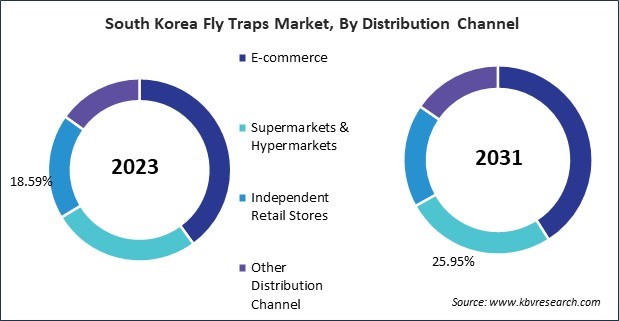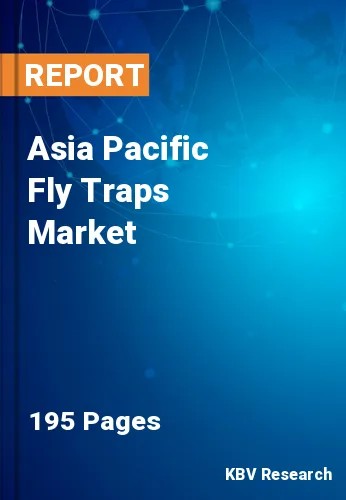The Asia Pacific Fly Traps Market would witness market growth of 6.8% CAGR during the forecast period (2024-2031). In the year 2022, the Asia Pacific market's volume surged to 4,889.7 thousand units, showcasing a growth of 18.3% (2020-2023).
The commercial application segment represents a critical sector where fly control solutions are essential for maintaining hygiene and compliance within various industries. This application includes the use of fly traps in commercial establishments such as restaurants, food processing plants, hospitality venues, and healthcare facilities. Thus, the China market is expected to utilize 1,978.30 thousand units of fly traps in commercial application by 2031.

The China market dominated the Asia Pacific Fly Traps Market by Country in 2023, and would continue to be a dominant market till 2031; thereby, achieving a market value of $23,247.9 Thousands by 2031. The Japan market is showcasing a CAGR of 6.1% during (2024 - 2031). Additionally, The India market would register a CAGR of 7.4% during (2024 - 2031).
fly traps are essential for controlling fly populations around livestock and poultry. Flies can transmit diseases and affect animal well-being, so traps help manage these pests and promote better health and productivity. Fly traps are used in greenhouses and nurseries to protect plants from fly infestations that can damage crops and reduce yields.
Additionally, they effectively manage pests attracted to plant growth and organic matter in these controlled environments. In industrial environments such as warehouses and manufacturing facilities, fly traps help prevent pest-related damage and maintain cleanliness. Traps are used to manage flies that may be attracted to stored goods or production areas.
The dairy farming sector in India is undergoing substantial development, and it is one of the largest milk producers. Increased dairy farming operations lead to larger volumes of organic waste, such as manure and feed, which can attract flies. The demand for fly traps in dairy farms is rising to manage fly populations and maintain hygiene in these high-volume environments. The livestock sector grew at a growth rate of 13.36% from 2014-15 to 2021-22. Livestock farming produces substantial amounts of organic waste, including manure and feed residues. This organic waste creates an ideal breeding ground for flies. Fly traps are increasingly needed to manage these waste-related issues and prevent infestations, supporting the growth of the fly traps market.
Free Valuable Insights: The Global Fly Traps Market is Predict to reach USD 388.5 Million by 2031, at a CAGR of 5.8%
Based on Application, the market is segmented into Commercial (HoReCa, Factories, Building Management, and Other Commercial Types), and Residential. Based on Type, the market is segmented into Electric, Container (Fly Light Traps, Fly Baits, Delta Traps, and Other Container Types), and Sticky. Based on Price Range, the market is segmented into Medium, Low, and High. Based on Distribution Channel, the market is segmented into E-commerce, Supermarkets & Hypermarkets, Independent Retail Stores, and Other Distribution Channel. Based on countries, the market is segmented into China, Japan, India, South Korea, Singapore, Malaysia, and Rest of Asia Pacific.
By Application (Volume, Thousand Units, USD Million, 2020-2031)
By Type (Volume, Thousand Units, USD Million, 2020-2031)
By Price Range (Volume, Thousand Units, USD Million, 2020-2031)
By Distribution Channel (Volume, Thousand Units, USD Million, 2020-2031)
By Country (Volume, Thousand Units, USD Million, 2020-2031)
Our team of dedicated experts can provide you with attractive expansion opportunities for your business.

